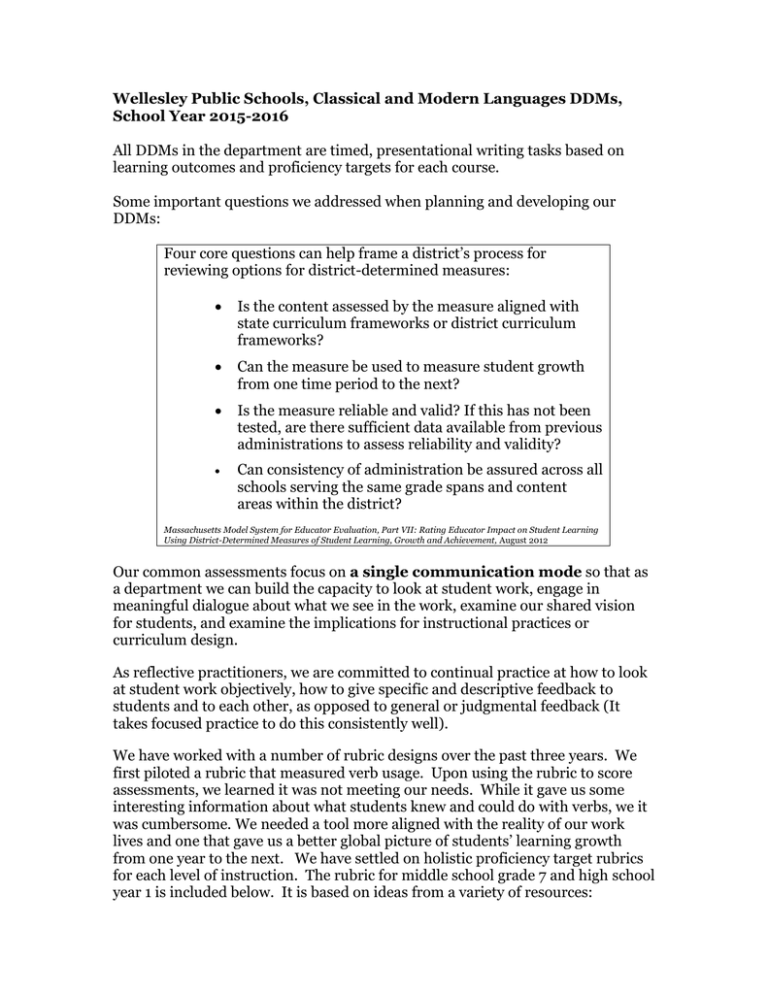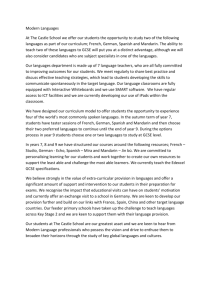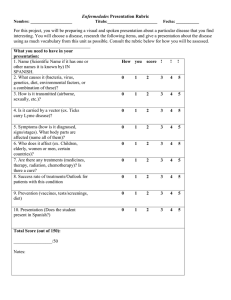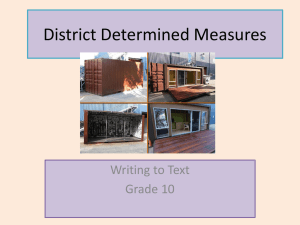Presentational Writing
advertisement

Wellesley Public Schools, Classical and Modern Languages DDMs, School Year 2015-2016 All DDMs in the department are timed, presentational writing tasks based on learning outcomes and proficiency targets for each course. Some important questions we addressed when planning and developing our DDMs: Four core questions can help frame a district’s process for reviewing options for district-determined measures: Is the content assessed by the measure aligned with state curriculum frameworks or district curriculum frameworks? Can the measure be used to measure student growth from one time period to the next? Is the measure reliable and valid? If this has not been tested, are there sufficient data available from previous administrations to assess reliability and validity? Can consistency of administration be assured across all schools serving the same grade spans and content areas within the district? Massachusetts Model System for Educator Evaluation, Part VII: Rating Educator Impact on Student Learning Using District-Determined Measures of Student Learning, Growth and Achievement, August 2012 Our common assessments focus on a single communication mode so that as a department we can build the capacity to look at student work, engage in meaningful dialogue about what we see in the work, examine our shared vision for students, and examine the implications for instructional practices or curriculum design. As reflective practitioners, we are committed to continual practice at how to look at student work objectively, how to give specific and descriptive feedback to students and to each other, as opposed to general or judgmental feedback (It takes focused practice to do this consistently well). We have worked with a number of rubric designs over the past three years. We first piloted a rubric that measured verb usage. Upon using the rubric to score assessments, we learned it was not meeting our needs. While it gave us some interesting information about what students knew and could do with verbs, we it was cumbersome. We needed a tool more aligned with the reality of our work lives and one that gave us a better global picture of students’ learning growth from one year to the next. We have settled on holistic proficiency target rubrics for each level of instruction. The rubric for middle school grade 7 and high school year 1 is included below. It is based on ideas from a variety of resources: Laura Terrill's wiki Foreign Language Educators of New Jersey Ohio Department of Education World Languages Standards NCSSFL-ACTFL Can-Do Statements ACTFL Performance Descriptors for Language Learners Massachusetts Foreign Language Curriculum Framework Center for Applied Linguistics: Assessment for Language Instructors: The Basics Our work for the current year (SY2015-2016) is twofold: 1. We want to develop proficiency target rubrics for presentational writing for all levels of study. 2. We want to look at our existing writing prompts and ask some important questions: a. What is the context for the writing? Does it feel like purposeful communication? Presentational writing at its best is set in a meaningful, real-world context. b. How well aligned are the writing tasks to the proficiency targets we have set? Are we asking too much or too little of students at different levels? How do we know? Example DDM’s: German Grade 7: Choose two family members, one in your immediate family and one not. Tell me all about them; What do they look like? Where do they live? How old are they? What do they do in their free time? Why do you like them? Spanish Grade 7: Write about yourself, your family and friends. Say as much as you can: name, where people are from, what people look like, what they like or don’t like, or anything else you can think to say about yourself or others. French Grade 8: Write a letter to introduce yourself to a French-speaking friend. Include things like your name, age, birthday, nationality, hometown, how you’re feeling. You might talk about the date, time, weather, family members, friends, activities, and anything else you wish to add. You may ask questions of your friend if you like. Modern Languages (French, German, Mandarin Chinese, Spanish), year 3: A friend of yours has a problem with someone. Describe the problem, explore various solutions, and then advise your friend on a specific course of action. You have 10 minutes to write. Modern Languages (French, German, Mandarin Chinese, Spanish), year 4: Describe what you will do next summer and compare it to what you did last summer. Compare something in the US culture to something in a culture of the target language. Modern Languages (French, German, Mandarin Chinese, Spanish), year 5: Choose one of the following traits: courage, faith, generosity, kindness, leadership, and choose a well-known person from the target culture (a historical figure or a figure from literature) who embodies this trait. Explain how the trait defines the person.



